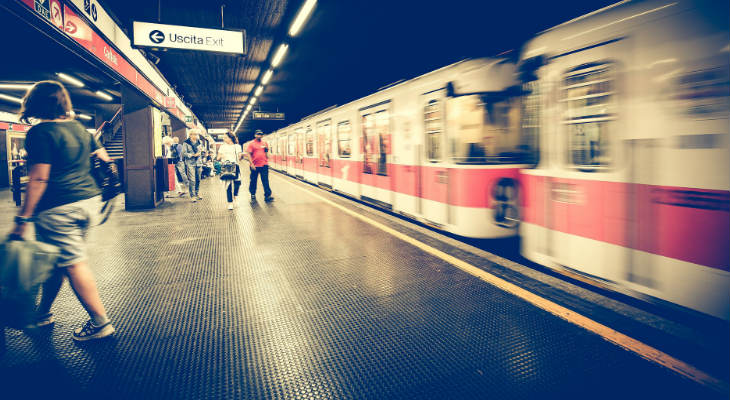
Like many other Europeans, Italians rely heavily on public transport. There are many reasons for this:
- Italy is a relatively small country and distances are reduced, especially if one compares Italy with nations like the U.S. or Australia
- City centers are often considered centro storico because of their age and traditional architecture. Cobblestone streets, ancient ruins, small charming lanes, and historical buildings make up areas that are often closed to traffic to avoid heavy congestion.
- There are several options available that can suit different pockets — from an extensive rail system to urban and long-distance buses, and even subway systems in major cities.
Should You Use Public Transport in Italy?
There are several reasons why you may want to do as the Romans do and take advantage of public transport while in Italy. The most noticeable is, of course, financial. If you’re in Italy on a budget, you’ll definitely benefit from using public transport rather than taxis and other private means of transportation.
How Much Is a Train Ticket in Italy?
It’s not by chance that students only move on public transport: if you plan your moves well, you’re guaranteed to save a noticeable amount of money that you can spend exploring the best the Bel Paese has to offer. And of course, you’ll be helping the planet in the process.
Single bus and subway tickets are very cheap compared to cities like Paris or London and won’t set you back more than a couple of euros.
There are several train options available in Italy. A high-speed train journey from Rome to Milan only takes 3 hours and can cost over €100. However, you can choose slower trains and spend less than half of that.
Frecciarossa and Frecciabianca are the fastest and most expensive trains. On these, you’ll have the option to choose between first and second class and you’ll have access to top-quality facilities including free wi-fi, newspapers, a restaurant, etc. But if you want to save on the ticket fare, choose a slower Regionale, the no-fuss train that Italians take daily to go to work or school. They usually call at all stations but are the backbone of the Italian rail system. An Intercity train is somehow in the middle.
Italy Transport Pass
Unfortunately, there’s no pass that will give you access to all transport options inside and across Italian cities. For what concerns urban centers, you will have to get information on daily or weekly passes available for each specific city you wish to visit.
On the other hand, if you plan on traveling extensively by train, you’ll be pleased to read that there are rail passes available to foreigners. With the Eurail Italy Pass, for example, you will have access to unlimited train travel for 3, 4, 5, or 8 days within a one-month period. It starts at just over $100 and there are discounts offered for youth, seniors, and other categories.
What Is the Best Way to Get Around Rome?
As it’s often the case, things may start to feel hectic in great urban centers like Rome, Milan, and Naples, especially when you don’t speak the local language. Although walking around Italian cities is in itself a magical experience, there’s so much to see and do in places like Rome that exploring the whole city by foot is simply not feasible.
Rome is a good example of how public transport works in large Italian cities. You can choose among a series of tickets (from 100-minute tickets to weekly passes) depending on your needs.
Usually, urban public transport tickets include:
- City buses
- Trams
- Metro trains
- Urban rail services
On the other hand, what’s unlikely to be included is:
- Train or shuttles to and from the city’s airports
- Trains or shuttle to and from the city’s ports
- Sightseeing buses
Metro lines are fairly easy to understand and are the fastest way to go from A to B relatively near the city center. Bus lines and stops may feel more complicated. However, there are useful maps that will be able to help at every bus stop. Buses usually run very frequently, even during the night. Taxis can be very expensive in Italian towns and may not be as fast as one hopes due to traffic jams (which are a daily occurrence in Rome). However, they may be the only option in certain circumstances, like going to and from the airport late at night.
Of course, you may still want to enjoy the freedom of renting a car and traveling more independently. In that case, remember that although many European countries accept a full driver’s license in English, you may be asked to provide an international license in Italy, together with your ETIAS visa waiver or another relevant travel permit for Europe.


